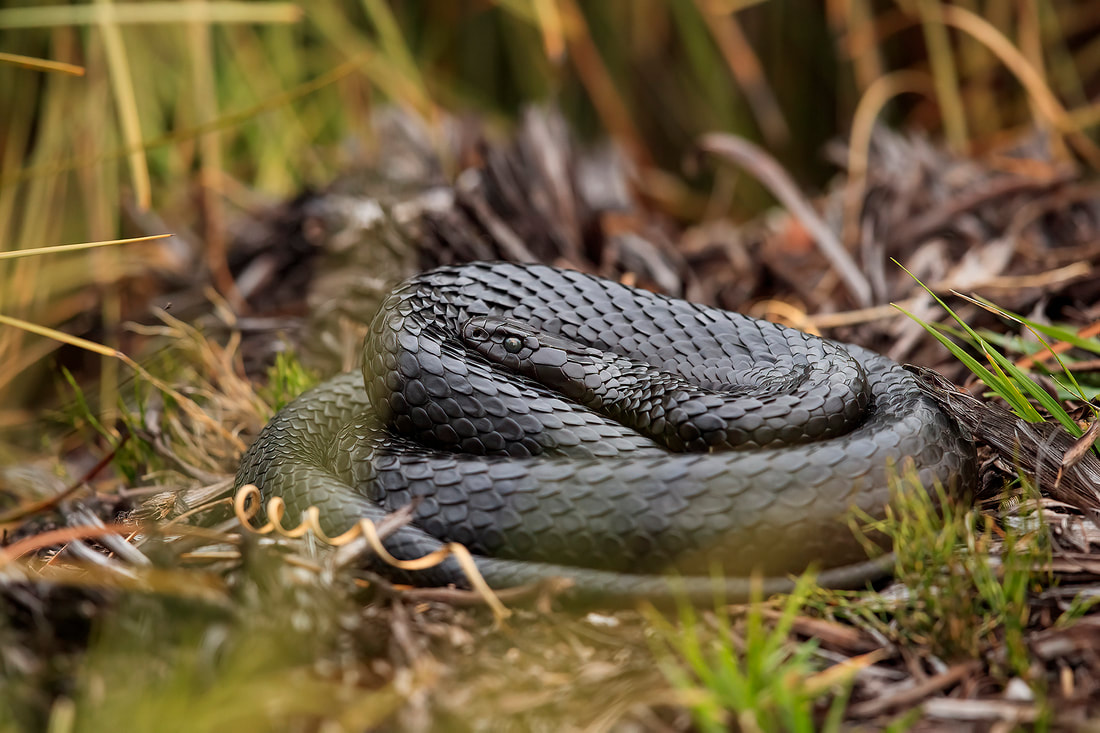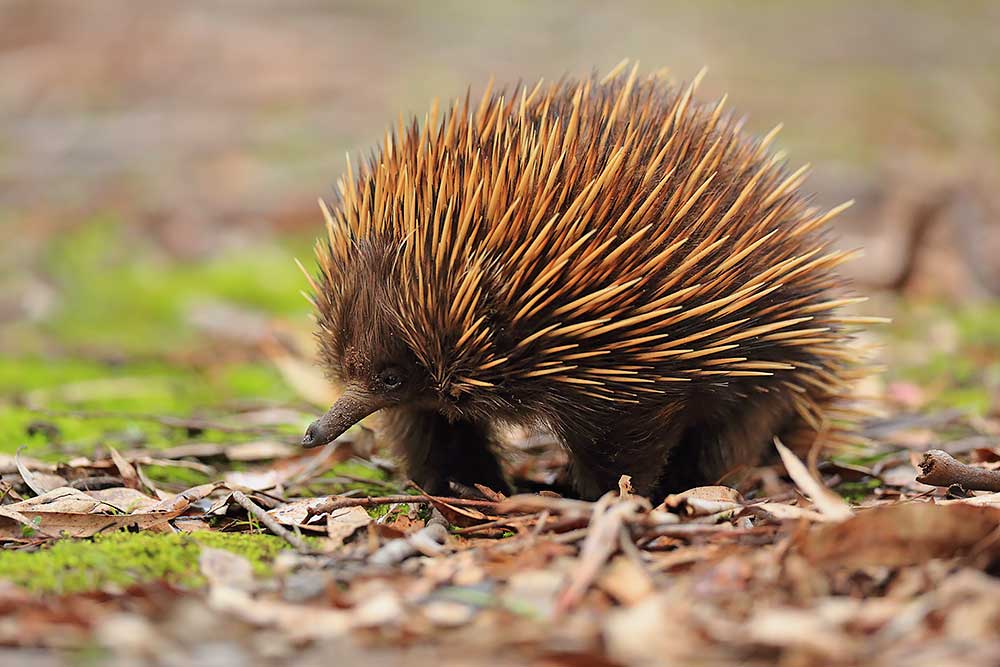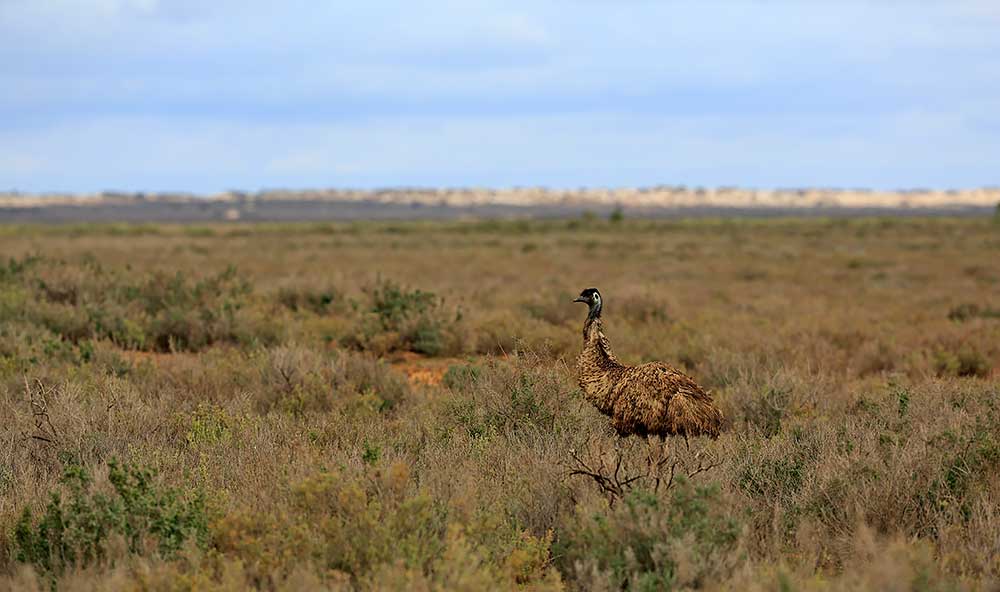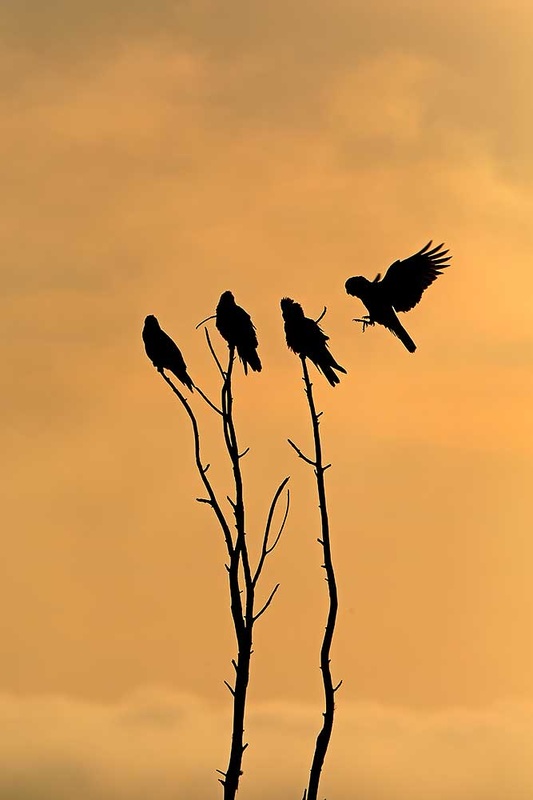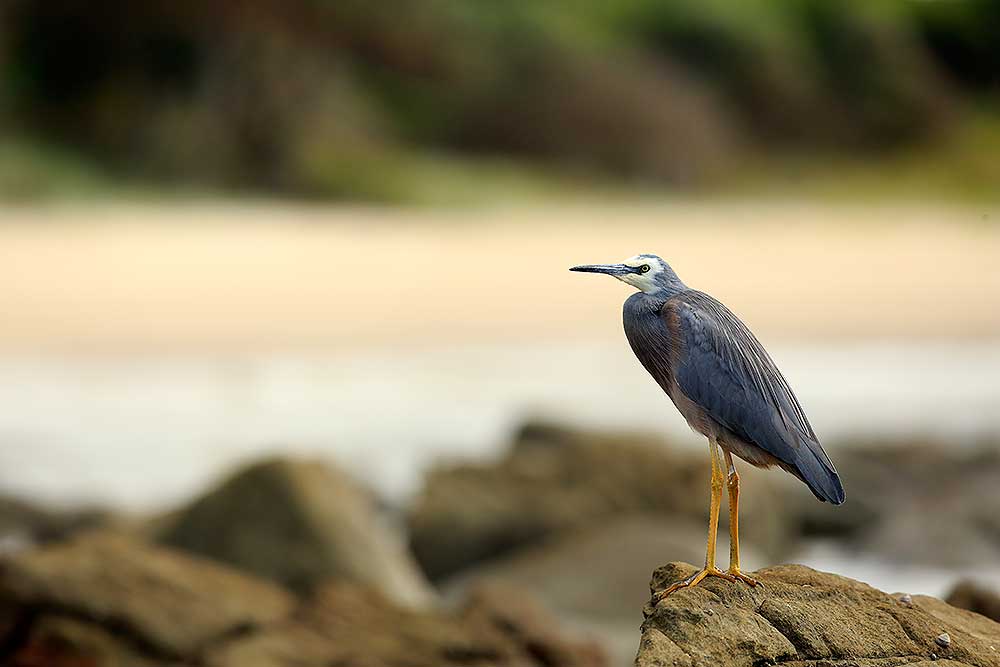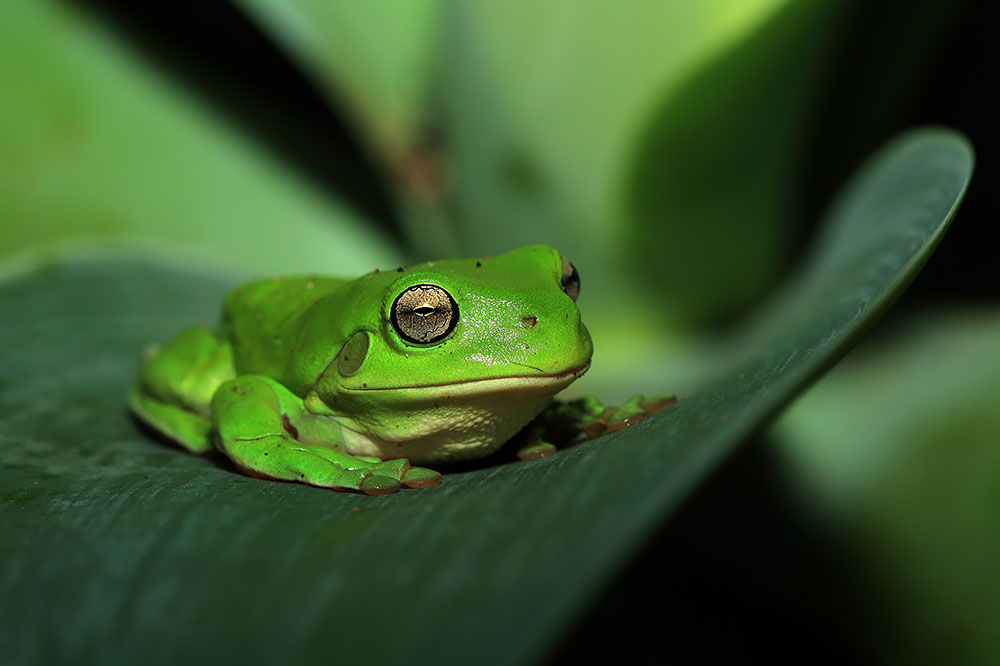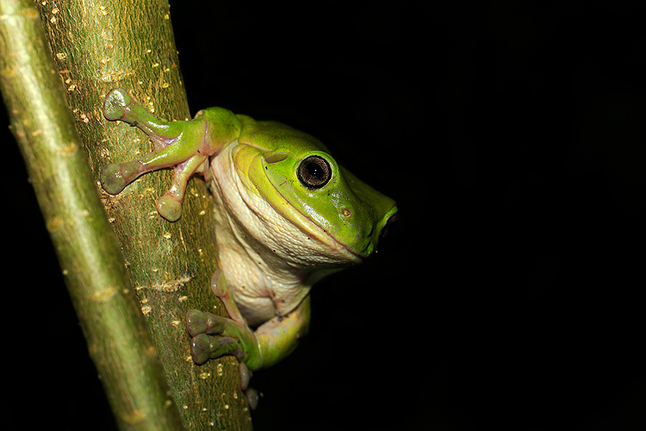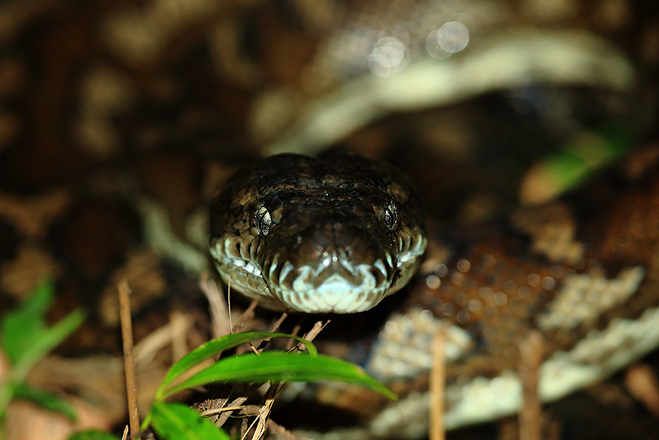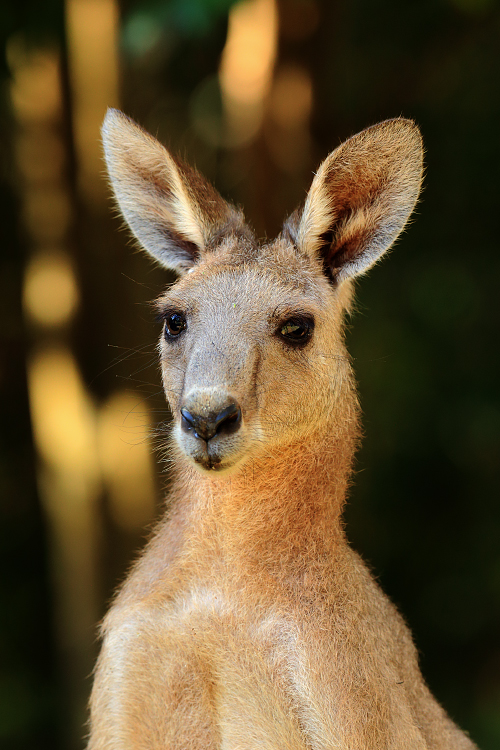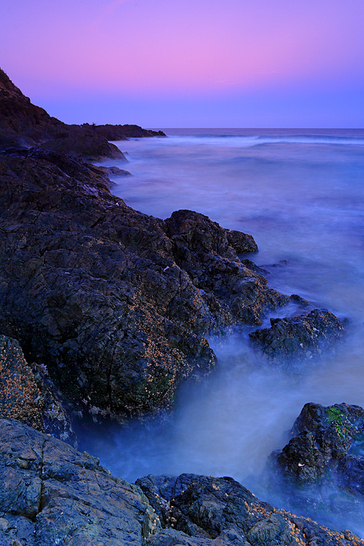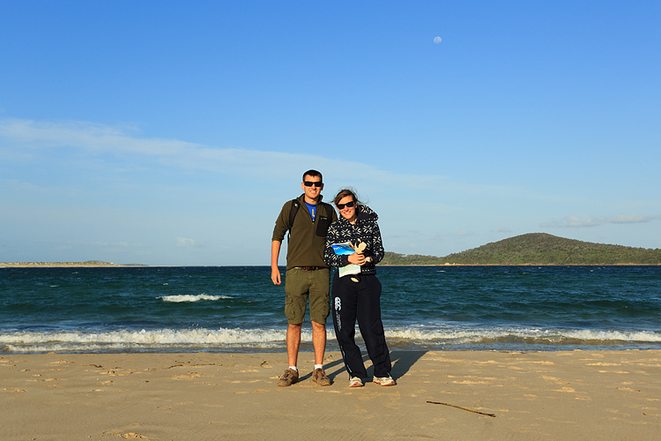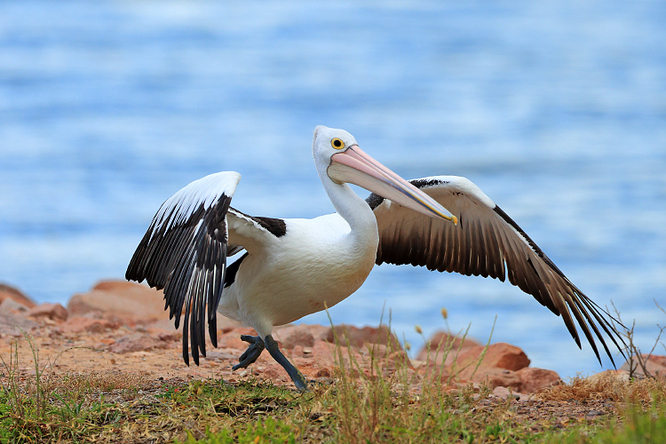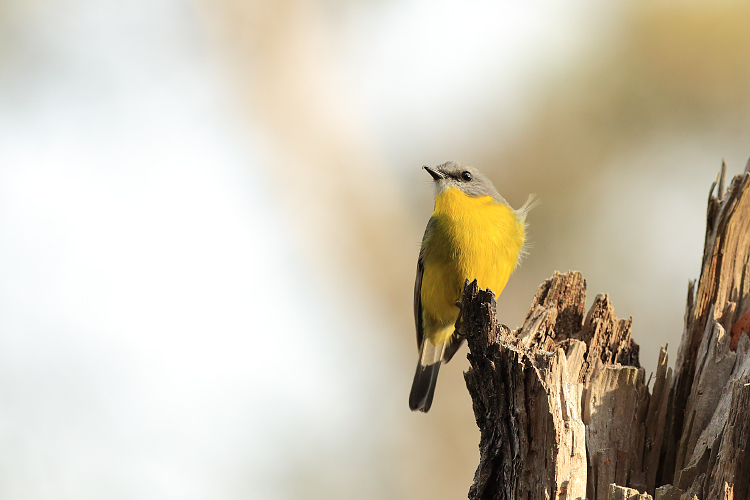|
I absolutely love being in the Antipodes as the wildlife here is not only unique, but it is utterly captivating, and so it was a delight to head back and spend another couple of weeks searching for and photographing some icons. Just as we did in the previous trip, we started on the mainland of Australia, photographing wildlife in the state of Victoria, before flying across the Bass Strait to Tasmania. Around the city of Geelong, we enjoyed photographing a wealth of wildlife including corellas, emu, eastern grey kangaroo, grey-headed flying fox and koala too. After a fantastic few days photographing the wild delights of the mainland, including some Australian oddities, we hopped on a plane from Melbourne down to the city of Launceston in Tasmania. From here we headed to the Tasmania arboretum for some great platypus sightings and photography. We then headed up into the hills and spent the next five days just immersing ourselves in the wild world of Tasmania's rugged mountains. Here photographic highlights included tiger snake, wombat, wallabies and several endemic birds. We headed back down from Tasmania's Highlands back down towards the coast and stopped once again at the Tasmanian Arboretum. We thought our previous visit was remarkable for the platypus encounters we enjoyed, but this time it was exceptional. The absolute highlight was a pair of platypus fighting after an attempt at mating. Over the next few days we continued by exploring the north-east of Tasmania, enjoying more wonderful photography opportunities including Forrester's kangaroos. After a great period photographing in the northern reaches of Tasmania, it was time to head south towards Hobart. We spent an evening in Hobart, primarily as a rest stop, before heading over to Bruny Island the following day. Here, we would be staying close to the Inala property and our hope was to photograph some of the region's iconic birdlife including the forty-spotted pardalote. As you can see, we had a magical couple of weeks photographing some of Australia's most sought-after species. It was great to be back in the bush and seeing some of my favourite Aussie wildlife.
0 Comments
As many of you will know, I spent a year living in Australia and absolutely fell in love with the country's magical wildlife. So when Wildlife Worldwide asked whether I would be interested in leading a dedicated photography tour there, I of course jumped at the chance. That was when Covid decided to pop its head up and the first couple of departures were postponed for 2 whole years. Finally, in December 2022, I was given the chance to take the helm for our very first departure. We started our adventures in the city of Melbourne and soon headed towards the city of Geelong and the You Yangs. Here we joined local naturalist and koala expert Roger, who we hoped would find us this arboreal member of the marsupial family. We were in luck. We then headed into the city of Geelong as we went to visit the colony of grey-headed flying foxes that call the mature trees home. It was here that we were also treated to some incredible views of eastern rosella. This colourful species of parrot are usually shy and rarely pose like this individual felt compelled to do. The next day, we headed to the nearby Serendip Sanctuary to photograph the resident eastern grey kangaroos and a wealth of other species that call this area home. It was a great first couple of days getting back in the swing of things with Australian wildlife. I absolutely love being with macropods (the family of marsupials to which kangaroos belong) and getting so close to such a big mob was absolutely fantastic. With a great couple of days behind us, it was time to return to Melbourne for a night before our flight across the Bass Strait and on to Tasmania. We started our stay in Tasmania by exploring the area's northern wilderness regions. Here the group enjoyed some wonderful views and photography of some truly iconic Australian species, including wombat, echidna and Bennett's wallaby. Finally, after a magical couple of weeks down under, we headed south to Bruny Island. The undoubted highlight here was the chance to see and photograph the diminutive, but critically endangered forty-spotted pardalote. It wouldn't be long before I would be back on Australian soil, hoping to photograph more wildlife in Victoria and Tasmania
Coming towards the end of our amazing road trip meant heading back northwards. We would end up going back up the east coast we now know relatively well. We will be saying goodbye to friends along the way but first there were a few more destinations we wanted to visit. In New South Wales far south, is the coastal town of Narooma. My girlfriend and I fell in love with Narooma and its beautiful watery lifestyle. Amazing beaches, a crystal clear tidal lagoon and some noisy locals all made it it one of our favourite spots. By noisy locals, I don't mean the human inhabitants, instead I am talking about the small population of Australian Fur Seals. We spent an afternoon watching these playful and rather characterful individuals, only wishing we had more time spend with them and this beautiful setting. After leaving Narooma we headed on, northwards up the eastern seaboard of New South Wales. This meant we were heading past one of my favourite places in Australia. I have already mentioned and highlighted Kangaroo Valley on this blog but I had to pop in once more and catch up with the Wombats. There was one particularly obliging and inquisitive individual but it was a little on the skinny side. It wasn't just the wombats that knew how to pose of the camera, a Kookaburra that seemed to be completely at ease around people, posed perfectly on a fence post as I snapped away. The next stop is Sydney so you will have check back here to see what adventures I had in a city I know quite well.
After our little stay on the bank of the Murray River, it was time to head to what is becoming increasingly known as Australia's Galapagos. Kangaroo Island is located to the south-west of the Fleurieu Peninsula and home to astonishing variety of wildlife. Some of this wildlife has been introduced but others are found nowhere else in Australia. We caught the morning ferry and started our drive across the 150 km island hoping to camp on the edge of Flinders Chase National Park. With a quick stop in the island's main township of Kingscote, we arrived at our camp site after a couple of hours (driving slowly to avoid the plentiful wildlife). Within a few minutes of setting up the tent we decided to go for a little walk around the campsite and it wasn't long before we found a particularly obliging critter ... This large Koala was in its shaggy winter coat and was on the move to try and take advantage of a small patch of gum trees. It's really unusual to see a Koala on the ground, particularly one that wasn't afraid of my presence. It was an incredible half an hour to watch this spectacular Koala making its way across the forest floor. What really amazed me was the fact that the Koala had to keep stopping regularly as it was simply too exhausted to carry on. It eventually found a tree it was happy with and went about the laborious climb up to the high branches. We thought it was best to leave the Koala in peace and allow it to rest for the remainder of the afternoon, we went on a slightly longer walk in search of some of the other wildlife that can be found on the island. It was within only a couple of minutes that my girlfriend spotted the unique Short-beaked Echidna. These again can be incredibly shy creatures and you have to be very careful not to scare them. The Echidna is a monotreme, like the Platypus, meaning that they are egg laying mammals. Having not seen any Echidna on our journey so far, it seemed that Kangaroo Island was awash these funny little mammals. Over the next few days we encountered 15 different individuals but none posed as nicely as the one above. The area is also famed for the Tammar Wallaby which is surprisingly small. Sadly these tiny little marsupials are only found in a few select locations across Australia but they seem to be thriving here. The coastal wildlife is just as impressive as that found on terra firma, particularly the eared-seals found at a variety of locations across the island. There is one place on the island that I had read about as a a truly spectacular landscape, Remarkable Rocks, they certainly live up to the hype ... Overall it was an amazing few days on Kangaroo Island but I only wish I could have had more time to really do the island justice. We were blessed with the weather, for the most part, and the wildlife was incredibly cooperative but we just didn't have the time or the money to really make the most of this incredible destination.
Having travelled down the New South Wales coastline it was time to head inland on this last part of our Aussie adventure. Our first stop was in the rural town of Goulburn, there wasn't much in the way of wildlife there but we had heard of a place called Kangaroo Valley. This, as you might expect, is a valley home to plenty of Kangaroos but it wasn't these critters we were after. We had also heard that the valley was home to a thriving population of Wombats. Up until now we hadn't found any wombats so we really hoped that we might be in luck ... we certainly were as you can see below! We then headed further inland, across the Hay Plain towards the farming town of Mildura in northern Victoria. This is one of Australia's fruit growing capitals but nearby is the remote Mungo National Park. We headed out early on morning driving off the main highway onto a gravel road, an incredibly long gravel road of nearly 100 kms. After a few hours, we finally arrived at this wild landscape in search of the Red Kangaroo. This was the only chance on our trip to Australia that we might see this incredible desert survivor, so we had to make the effort. We struck gold, not only seeing the Red Kangaroos but also the Western Grey Kangaroos and wild Emus. The next leg of the inland part of our journey took us across another state border to South Australia. We followed the Murray River from Mildura towards the riverside town of Mannum. Nestled right on the edge of the winding river it was a bird-watcher's paradise with a very obliging community of Brush-tailed Possums just to top it off. The possums were fantastic and we loved the mother with her young baby, the images just don't really show the difference in their size. The next morning we awoke to a valley full of a thick mist and I knew I had to go to the waters edge and see what subjects I could find. The Black Swans and the Galahs were just superb and so cooperative, it was a truly magical morning. The next part of our journey is to the magnificent Kangaroo Island so come back soon and check it out!
I have now been travelling around Australia for 7 months, it has been an incredible experience so far. I have loved every moment of it both photographically and just from a life experience point of view. I just hope you have enjoyed the seeing the images as much as I enjoyed taking them. I have been filling up my hard drives, working my camera to death and there is only another month to go now before we move on to Bali and then New Zealand. This final leg 'down under' is a long road trip, heading from the warm sub-tropical climes of Brisbane to the cold temperate coastline of southern Australia. Of course with a bit of semi-arid landscape in the middle just to add a bit of variety. Here are just a few photos from the first leg along the coastline of NSW before we headed inland through the ACT, Victoria and South Australia. Our first stop with wildlife was the small town of Urunga which is known for its boardwalk across a mangrove habitat to the beach. There is the usual local population of Australian Pelicans who are more than happy to pick up the scraps from the fisherman, they also posed superbly in the perfectly still water and I was blessed with a soft evening light. It all equated to a really artistic shot, very striking but really rather simple. I always remember what I was taught at school ... K.I.S.S (Keep It Simple Stupid) and it is often very apt. The mangroves were also home to a small breeding population of the Beach Stone-curlew which were surprisingly obliging on the photography front. The low light levels did make it pretty tricky to the get shots but the high ISO capabilities of the 5D Mark III helped no end. We also visited the nearby Dorrigo NP, famed for its spectacular stand of sub-tropical rainforest. It really is a landscape photographer's dream ... And back to the wildlife ... The Sooty Oystercatcher is a bird that I have been trying to find ever since I arrived in Australia, these stunning birds live on the rocky foreshore and can be pretty flighty. It wasn't until we visited the township of Iluka (close to Urunga) before I got my first sightings and they were superbly obliging. Bearing in mind that I only have a 300mm f2.8 lens, my reach is rather limited when it comes to bird photography but these were really compliant subjects! I spent over an hour sat on the volcanic rocks trying to capture them and feel I put together quite a collection. Above is just a small taster of the time I spent at Iluka. I was also accompanied by a White-faced Heron for much of the time. Whilst eating my lunch I also had a few cheeky Australian Magpies come and keep my company ... Our final stop on the first leg of our tour was Seal Rocks. All I can say for this tiny community is ... WOW! It is so peaceful, utterly beautiful and pretty much untouched. A truly special place on this stretch of Australia's coastline, just make sure you don't tell too many people about it! The lighthouse was the real start
Having been in Australia for over 5 months it was about time we had some visitors, luckily for us, my girlfriend's parents came for a holiday. We decided we should show them around some of the areas we already knew in norther New South Wales and southern Queensland. We started off in our old haunt of Byron Bay, showing them the area's amazing national parks and even the marine park. We were very lucky to see turtles and a whole host of other species but as I don't specialise in underwater photography, you'll just have to take my word for it. I did manage to take a few photos of the shore-based wildlife ... From Byron we headed northwards, stopping for an afternoon at the Daisy Hill park which is famed for its Koalas, we didn't see any Koalas but we did some some lovely Red-necked Wallabies. Our main destination for this mini holiday was Fraser Island which is famed for its population of Dingoes. These wild dogs are thought to be the purest left in all of Australia, due to their isolation. We saw one within only 30 minutes of our arrival on the island but as I was driving I didn't manage to get an image. Thinking we would see plenty more I was a little nervous after two full days without any further sightings. On the evening of our third day on the island, I went for a sunset walk and I was treated to a real spectacle. The sunset was stunning ... but as I was waiting for the light to turn that incredible golden colour I felt like I was being watched. The next day was our last on Fraser Island, we went out in search of the Dingoes first thing but had no luck. Was that to be the last encounter with these beautiful dogs?
Well as it turns out, no ... we went to stop for lunch at a campsite and picnic ground we were surrounded. There were two adults and two rather large pups, all seeing what they could scavenge. Of course we made sure not to leave any food behind for the Dingoes, hoping that others did the same. Urban kangaroos, possibly my favourite subject to photograph in all of Australia, so far at least. Well, I might have become a little addicted, scratch that ... I am definitely addicted. There is nothing really in the world that compares to the kangaroos and the wallabies of Australasia, with their deer-like head, long muscular tail and their incredibly energy efficient motion. For me though, they are characterful and just utterly beautiful ... i don't needy any excuses to just keep photographing them. All the images above were taken on one glorious evening, I was alone with the kangaroos and the lighting couldn't have been better. I went back the next day and had further luck ... The female with the joey in her pouch was particularly obliging, you just can't describe how wonderful it is to be so close to these animals. Another fantastic evening with these charismatic marsupials and I have a feeling there might be another few to come before I leave the area.
Australia is rightly famed for its unique wildlife, the most iconic of these has got to be the kangaroo. On the Pacific coast, the species of kangaroo you will encounter is the Eastern Grey, this is a large mammal and one that you need to respect. Sadly, more often than not there seems to be some sort of conflict with the growing population and expanding towns and cities. This is certainly the case in the small towns to the north of Brisbane, both the small towns of Beachmere and Toorbul are home to Eastern Grey Kangaroos. Beachmere is undergoing a new phase of development with large swathes of swampy bushland being drained and turned into now housing estates. It seems that there has been little evaluation of the environmental impacts and I came across a group of Kangaroos still trying to forage on a vast construction site. Toorbul is a slightly different proposition to Beachmere, there seems to be little new development here but there is plenty of established housing. Here the kangaroos have made their homes among the parks and gardens of the local community and have little fear of people. It seems to be quite a harmonious situation but perhaps it isn't all as it quite seems. After an hour or so an absolute idiot came towards the small group of kangaroos on a mini motorbike and drove straight at them. All the kangaroos panicked with one poor youngster, who you can see in the portraits towards the bottom of this post, falling over right in front of me and desperately scrabbling to try and avoid the bike. It was horrific to see and really showed me the worst in humanity, the individual paused beforehand and purposefully accelerated towards them, seemingly proud of his vile act. It was then that I decided to leave this group alone so not to stress them out any further than their ordeal with one selfish and bizarre individual. Here is the poor young kangaroo that panicked as the motorcyclist approached, thankfully it was very calm and relaxed beforehand when I was watching it.
Having returned back to Byron Bay, I was fortunate to spend some time with the amazing bird life found along the golden beaches. It is amazing to watch how different people react around the wildlife that surrounds them. Some people truly astonish me, they would tell their children to chase after the groups of Crested and Little Terns, others would send their dogs off after them and a few would just walk at them showing a complete and utter disregard for their natural surroundings and the wildlife within it. I understand that some people are not interested in wildlife but surely they should learn that they must respect it? Anyway, I was privileged to spend some quality time watching the amazing bird life, particularly the two species of tern. The extra cast members included the Australian Pelican, Pacific Golden Plover and Pied Oystercatcher. Firstly, let's start with the terns ... The Pacific Golden Plover is incredibly hard to get close to without disturbing so I always made sure that I kept my distance, this did mean it was much harder to get a quality image but I did what I could. The lovely warm, evening light certainly helped and the beautiful blue sky really helped provide a striking backdrop. It was incredibly important that I kept as low a profile as possible throughout my time with the birds, if I stood up at anytime I would have scared off the individuals. I primarily kept myself in the prone position and generally got pretty mucky or sandy in the process. Generally, you have to get dirty or suffer in some way to get a shot worth keeping. The Pied Oystercatchers were my favourite of the shorebirds and I never tired of photographing them. Lastly but certainly not least, the Australian Pelican. A leviathan of bird world, the pelican is pretty impressive but the surf certainly made it look small on this day.
After the amazing sightings of Platypus in Eungella NP, we headed further inland hoping to visit Carnarvon Gorge. We first stopped off in the gemfields and stayed in the small community of Sapphire, where I got up close and personal to an amazing Oscillated Velvet Gecko which was searching for a meal in the extraordinary heat. After this short stop we continued southwards to the amazing Carnarvon Gorge but sadly it didn't go quite as we had planned. We were hoping to stay there for 4 nights, that way we could make the most of this amazing destination. Unforunately, after only 1 night we had to leave, a large rainstorm was forecast and we could be cut off for a couple of weeks. We got to spend one afternoon enjoying the local wildlife though and it was great from a photographic point of view. With close encounters of both Swamp Wallabies and Eastern Grey Kangaroos the highlight. As the sun started to set a Kookaburra appeared in the trees above me and started to laugh until the light was no more. I took a single silhouette as my final image of the day.
So after a frog bonanza in Queensland, we spent 3 weeks travelling back down south towards the northern areas of New South Wales. Along the way we came across a wide range of Australian critters ... and to make a nice change, even a few mammals. Including one that I have wanted to see in the wild for as long as I can remember, the incredibly elusive Platypus. We visited Eungella National Park in tropical Queensland, where we had heard there was a relatively good chance of seeing these unique and intriguing mammals. As you may or not be aware, the Platypus is only one of two monotremes that still exist on earth today. The classification for a monotreme is that they are an egg laying mammal, the other species which features in this unusual family is the Echidna. The Platypus is even more bizarre than just the fact that it lays egss, it also leaks milk through its skin and even has poisonous spurs on its hind legs. Anyway ... here are the results of this little expedition As you can see from the two very different styles of image above, I had two separate sightings. In fact, we had 3 separate sightings of at least 5 individuals. Our first sighting was as the evening light was fading and we were waiting above a beautiful isolated pool, within twenty minutes we saw a splash and a bow wave ripple on the water. It was my first ever moment watching a wild Platypus and something that will remain with me for a very long time, it was magical. We re-positioned ourselves and waited , hoping that we would get an even closer encounter.
On the second day we went back but not until later in the morning. Platypus are primarily crepuscular and it is very unusual to see them during the heat of the day. However, we were in luck, the second two images are both taken at 11 am and was swimming within 5 metres of us. It was such a magical experience and one I will never forget. So we have spent the last few weeks up in the tropical part of Queensland, hot sun, rain and frogs were the recurring theme. Some people hate frogs and some are even afraid of them but I absolutely love them, especially tree frogs, and went out almost every evening in search of some amphibian friends. To say I got lucky would be an an understatement. It was utterly mind blowing! There was the world's largest species of tree frog, the White-lipped Tree Frog that really would fill your entire hand, as well as the tiny little Red-eyed Tree Frog which are indescribably beautiful and rather petite compared to their larger cousins. Anyway, I had an absolutely amazing time with the frogs and the following images were captured over the space of a few weeks. We have already encountered the Green Tree Frog further south near to Byron Bay but they are still amazing subjects and they always look like they are smiling. In my books, any animal that looks as if it is smiling is instantly a favourite. At first glance the Dainty and the Red-eyed Tree Frogs look very similar but their calls are noticeably different. Once you get close enough with a torch you quickly realise they have quite different features and own distinct habits. They are much more aware of you when photographing them and only relax again once you move further away. The Eastern Dwarf Tree Frog really is utterly tiny, at first you think it must be a new born. To give you an idea of its miniature stature, the tadpoles are actually bigger then some of the adult frogs. The image below gives you an idea of just how tiny they are, resting on my girlfriend's finger tip (this individual was being rescued from the swimming pool). I will update you all with some amazing mammal pictures soon, including one that I have always wanted to see, a really weird and unique species. I would also just like to say a massive thank you to Canon Professional Services, Australia! My Canon 5D mkIII had a complete power unit failure and I was stuck without a camera but CPS came to my rescue and lent me a 1DX for the Christmas period. Without this camera I would not have been able to capture any of the images you see above. This just underlines why I use Canon equipment, the service is out of this world.
So for the last couple of weeks we have been based near the popular town of Byron Bay. We are actually up in the hills in the 'hinterland' but the climate is fantastic and there is an amazing amount of life that comes out at night. We are house sitting in the village of Federal and are also looking after a collection of chickens. One of the biggest problems with looking after chickens here is that there are large Carpet Pythons ... only last night I heard next doors chickens sound an alarm but by the time I got there a 2 metre python had already killed one chicken and was trying to kill a second. It was really sad but if we hadn't have got there when we did, then the whole coop could have been lost! It isn't just snakes that inhabit the night, there is also an amazing diversity of invertebrates ... Then there are the amphibians ... That'll do for now but I will post some more within the next week. I will also update the details for the invertebrates so they are all correctly labelled.
The last stop on our road trip, from Sydney to Federal (near Byron Bay), Coffs Harbour was probably one of our favourite spots. We actually stayed in the village of Emerald in the caravan/campsite there, it was right next to the beach and it was just lovely and peaceful. Even better for me ... the wildlife was fantastic! As you can imagine, I spent quite a bit of time with the local inhabitants ... they seemed completely at ease as long as you respected their personal space (if only everybody respected the wildlife and didn't try to pet it). As well as the Kangaroos for company we also had some feathered friends too, some particularly noisy and large friends. The Yellow-tailed Black Cockatoo is a monster as far as parrots go and they are pretty vocal. They are inquisitive and love to play at the same time as feeding, they even like to see what you are up to. The next day we were in for a treat, after a lazy morning around the campsite we decided to head down to the beach. We stayed for maybe half an hour before the strong winds and wind driven sand made us a little irritable. We returned to the tent for a calmer spot to relax and enjoy the blazing sun, of course that meant I ended up photographing the Kangaroos and in particular, a gorgeous Joey who had remained hidden in its mother's pouch since the previous day. As you can see below, it let me get pretty close but that was after sitting with them for a couple of hours and letting them know I wasn't a threat. A really wonderful experience with a truly beautiful animal, mammals are my passion and to be allowed so close to such a charismatic character is truly a privilege. As well as some close encounters with some large males the local bird life was also pretty obliging. After this, our last stop, it was time to finish our journey by heading northwards and on to Federal. As we packed up the car for the final time before settling in Byron Bay (where we are staying for 5 weeks), I noticed a little stow away which I thought was particularly photogenic.
After our couple of nights in Port Stephens, it was time once more to move northwards along the eastern coast of Australia. Our next stop on this journey was Port Macquarie. Here we decided to stay close to Flynns Beach and make the most of the gorgeous coastline. We arrived around lunch time and set up our tent under the shade of the gum trees, after which Vic was reading her book and happened to look up and see this little fella ... In the afternoon we went for a little walk and enjoyed the wonderful beaches and seascapes. The next day the Koala seemed to be a little elusive and we were struggling to spot it, eventually (with the help of a campsite member of staff) we spotted it high in a gum tree. We were luck to also have a regular influx of Rainbow Lorikeets. We then headed down to the coast to enjoy the colours and scenery at sunset. After a wonderful evening, watching the world go by and photographing the rocky shore at the edge of the beach, we headed back to camp for the evening knowing that tomorrow we would be moving on again. This time to Coffs Harbour.
There was one last wildlife encounter before we left though and this time it was a really intimate experience with the Koala who climbed down the tree next to us and headed back up another tree. With a leap to a third tree it settled itself down and posed for a few images. Sadly, the leap was impossible to photography ... imagine a leaping Koala shot! After a couple of days in the chilly, but ever so beautiful, Blue Mountains we had to start heading north and on to the coastal region of Port Stephens. We stayed slightly off of the coast but our campsite was great for the local wildlife more than the site itself. On the first night we heard an almighty crash in the trees and when we shone our torches, we saw a pair of glowing red eyes! Here is what we saw ... I realise that Possums aren't rare and are relatively easy to spot at night in Australian towns but still ... to get so close to a wild animal and get a shot like this was pretty phenomenal, especially as we were in the bush. We did go out beforehand, including a brief visit to Gan Gan lookout (aptly named after Vic's Grandmother). We also had a walk along one of the beaches and really tried to make the most of the gorgeous evening sun. We had a full day in Port Stephens the next day and after a spot of sunbathing on One Mile Beach we decided to have a look around and see if we could spot any Koalas. Wherever you go in Port Stephens it mentions Koalas, the advice to spot one ... just look up! We looked up but couldn't see one (well Vic spotted one whilst I was driving but I didn't manage to see it). So instead we went to Soldier's Point and came across a family of Kookaburras and a group of Pelicans! So after couple of days exploring another small part of Australia's east coast we had to move on to our next stop, Port Macquarie.
Having spent just over a week in Sydney and sorting out the admin side of a working holiday visa (bank account, car, campsites etc.) we headed into the Blue Mountains, to the west of Sydney. These vast wooded hills rise up to over 1,000 metres (3,000 ft to the British readers) and are home to an amazing number of spectacular viewpoints and some stunning wildlife too. We decided to stay in a village called Blackheath, close to the rural town of Katoomba, for two nights as we explored a little of the region before moving up the eastern coast and on to our next destination, Port Stephens. The campsite was right next to the bush and we were surrounded by plenty of native flora and fauna, primarily birds and a few frogs which we never managed to see. Anyway ... on to some pictures! These first two images were taken right next to the campsite and I have to say I was happy to find the Frogmouth ... they aren't the easiest of birds to spot! So after doing some of the typical touristy stuff I had to get the long lens out again ... I can't resist when there is wildlife that is completely new to me! So a lot of birdlife was all around but the mammals were proving to be elusive, amazing how it is the same world over! Next stop on our road trip north is Port Stephens ... let's see what that brings us in the way of wildlife and landscapes!
|
AuthorBret Charman Archives
July 2024
Categories
All
|






